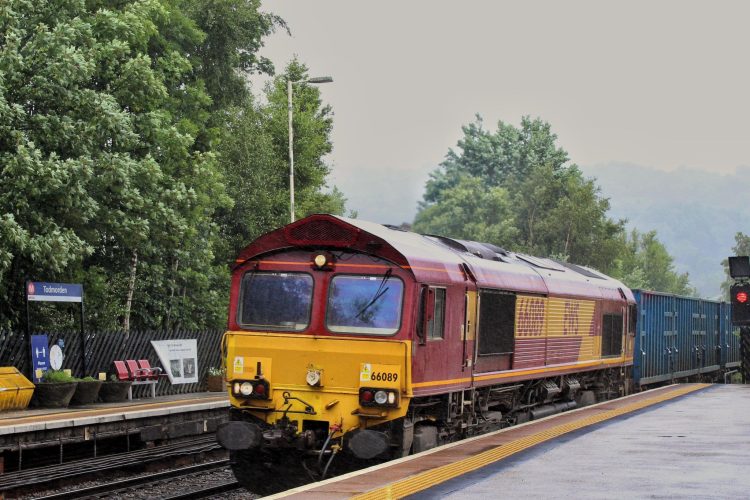The Rail Safety and Standards Board has carried out a research project which has revealed approaches to improve rail freight haulage
The research project carried out by the Rail Safety and Standards Board has led to freight operators being able to haul a greater number of goods wagons on trains which will see a knock-on effect in environmental impact and overall financial efficiency.
The project has allowed existing couplers which connect freight wagons to safely connect a greater load with evidence revealing that a 34.5-tonne rated coupler could carry 40 tonnes which is a 16% increase. 56 Tonne-rated couplers can also see an increase to 63 tonnes which is an increase of 13%. The increased ratings are able to be applied to wagons which are operating today with no need for upgrades or engineering assessments.
The research will see over 12,000 rail freight wagons which is more than half of Britain's fleet, get an upgrade in traction rating or the amount of weight it can safely haul.
The Rail Safety and Standards Board used real-world case studies in order to carry out the research project which led to the discovery that upgrading coupler strength ratings could offer huge benefits both environmentally and financially.
A typical journey from England into Scotland would see more than two tonnes of CO2 emission saved using the new findings alongside a substantial amount of nitrogen oxides and particulate emissions alongside the numerous financial efficiencies provided by the increase in train length.

Case studies:
- A 50-mile journey in both directions hauling 24 wagons – increased to 27 wagons saw environmental savings of 0.25 tonnes of CO2 with projected annual financial savings of £291k.
- A 235-mile journey in both directions hauling 14 wagons – increased to 16 wagons provided environmental savings of 1.4 tonnes of CO2 with projected annual financial savings of £245k.
- A 235-mile journey in both directions hauling 19 wagons – increased to 23 wagons provided environmental savings of 2.1 tonnes of CO2 with projected annual financial savings of £364k.
The implementation of the improved freight couple load rating is now underway within the rail industry alongside the identification of routes which are suitable for longer freight trains.
RSSB's Lead Research Analyst, Aaron Barrett said: “It's good to see the results of our research directly helping freight train operators. By enabling longer trains, more goods and materials can be hauled per journey. This will have a hugely positive impact on emissions and financial efficiency.
“This research project is the first in a series, funded by the Department of Transport, designed to help the rail freight sector in Great Britain. Our freight research programme is currently focusing on the safe operation of rail freight, raising the average speed of services, enabling the operation of longer trains and reducing emissions.”
Rail Minister, Huw Merriman said: “This research is hugely promising. It's great to see how we're continuing to improve our freight network, so even more goods and materials can be moved with every journey, strengthening the UK supply chain.
“Government investment into new ideas and innovations is vital as we continue to strengthen the UK supply chain and strive towards greener freight and net zero by 2050.”
Director General of the Rail Freight Group, Maggie Simpson said: “Rail Freight Group members have been working hard to improve the efficiency and performance of their rail freight services and look forward to moving more goods and materials on the new capacity this research has identified.
“RSSB's research projects are bringing modern thinking and analysis to age-old issues, and will enable more goods to be hauled by train without needing investment in new infrastructure or rolling stock.”
thats all right till workers see they are doing more
Why was such a low limit imposed in the first place?
Freight operations and rosters are complete mess at present. I frequently see a freight train top and tailed with one wagon sandwiched in between. Often with 2 class 68.
Why are so many formations top and tailed these days when freight terminals all have run arounds?
I see too many light engine movements. Often one after another. This using up a path
The UK rail freight network is a total shambles. Its run totally inefficiently with nonsensical rostering and pathing. Rostering of rolling stock looks likes its done by a 5 year’s old. Passing loops aren’t used effectively.
Etc etc etc.
It’s not a toy train set but in the UK the system is run like one.